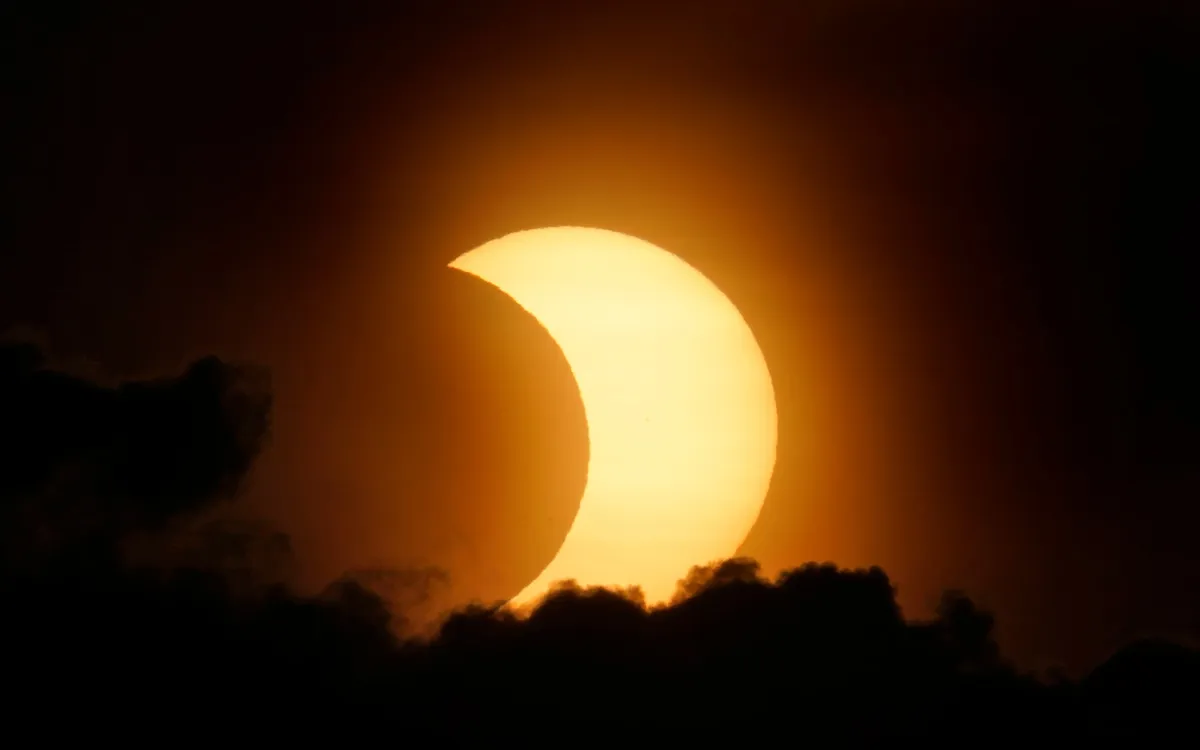
This weekend, skywatchers across the Northern Hemisphere will have the unique opportunity to witness a partial solar eclipse on March 29, 2025. This celestial event will be visible in various regions, including Europe, eastern North America, northern Asia, and western Africa. As the sun rises, the moon will partially obscure it, creating a breathtaking display that is sometimes referred to as a “double sunrise.”
In certain locations, particularly in parts of the U.S. and Canada, observers may experience a fascinating phenomenon known as a double sunrise. This occurs when the silhouette of the moon creates the illusion of the sun appearing as two distinct “horns” rising above the horizon. According to reports from Forbes, viewers in areas such as Nunavik, Quebec, New Brunswick, and Maine may even see the sun take on a shape resembling a “smiley face.”
Not everyone will experience the eclipse in the same way. NASA has outlined that the partial solar eclipse will be visible at varying times across several states, including Virginia, West Virginia, Pennsylvania, New York, New Jersey, Rhode Island, Delaware, Connecticut, Massachusetts, Vermont, New Hampshire, and Maine. Below are the specific times for major cities:
Baltimore, Maryland: 6:55 a.m. to 7:02 a.m. EDT Boston, Massachusetts: 6:31 a.m. to 7:07 a.m. EDT Buffalo, New York: 7:02 a.m. to 7:09 a.m. EDT New York City: 6:44 a.m. to 7:04 a.m. EDT Philadelphia, Pennsylvania: 6:49 a.m. to 7:03 a.m. EDT Portland, Maine: 6:27 a.m. to 7:10 a.m. EDT Washington D.C.: 6:56 a.m. to 7:01 a.m. EDTIt’s important to note that in some locations, such as Buffalo, the partial eclipse will have already begun by the time it becomes visible. Weather permitting, viewers in cities like Rochester, Syracuse, and Albany will also have the chance to experience this remarkable event.
A partial solar eclipse occurs when the moon passes between the sun and Earth, resulting in the sun appearing as a crescent shape. This may cause the sky to darken slightly, creating an enchanting atmosphere. According to the Associated Press, unlike last year’s total solar eclipse, there will be no moment of totality during this event. Therefore, it’s crucial for viewers to wear proper eye protection at all times.
To safely enjoy the eclipse, it is recommended to use special ISO-certified glasses. If you still have eclipse glasses from last year that are undamaged, you can use those. Alternatively, you can order new glasses from vendors approved by the American Astronomical Society. For those who want to observe the eclipse indirectly, there are creative methods like making a pinhole projector with everyday materials or using a colander to project the eclipse on a surface. Observing the ground under a shady tree can also reveal crescent shadows as sunlight filters through the leaves.
While solar eclipses are not particularly rare, the next total solar eclipse will not occur until August 12, 2026, which will be visible in regions such as Greenland, Iceland, Spain, Russia, and parts of Portugal. A partial solar eclipse will also be observable in Europe, Africa, and North America on that date. Skywatchers are encouraged to mark their calendars for these upcoming celestial events!